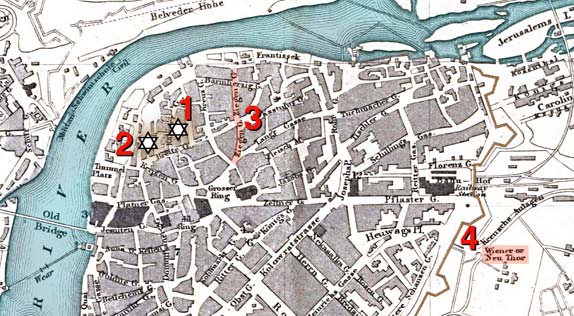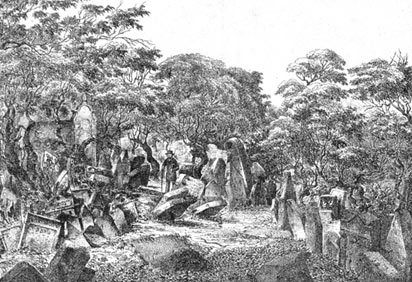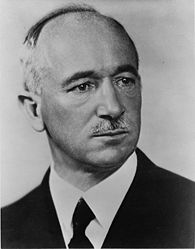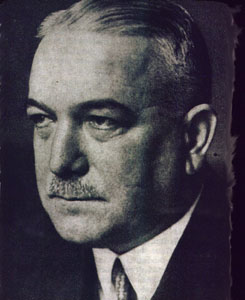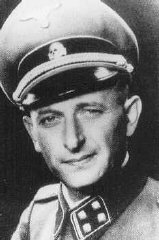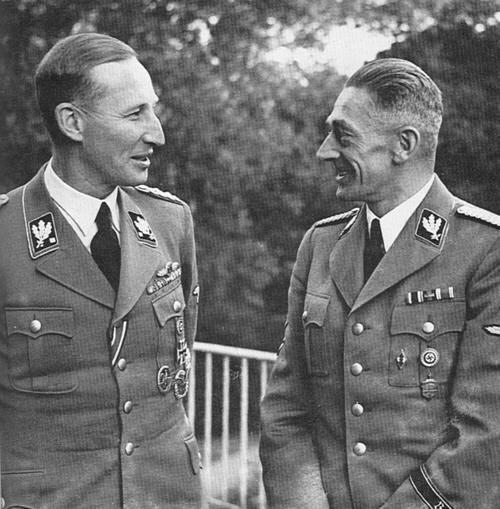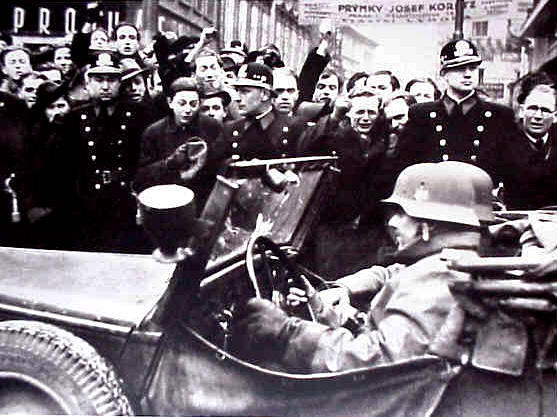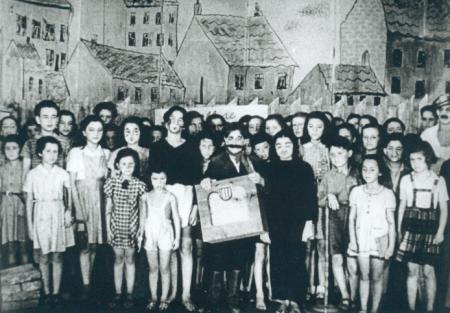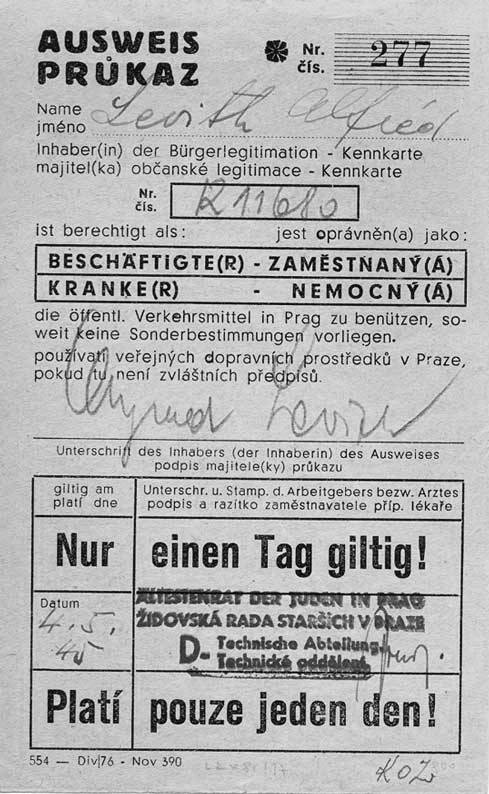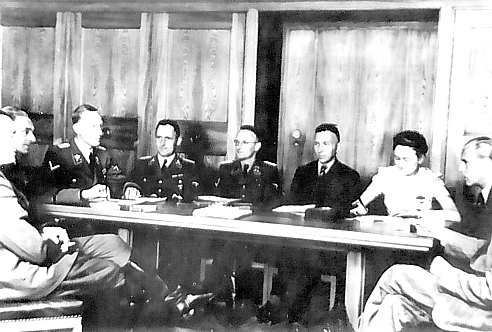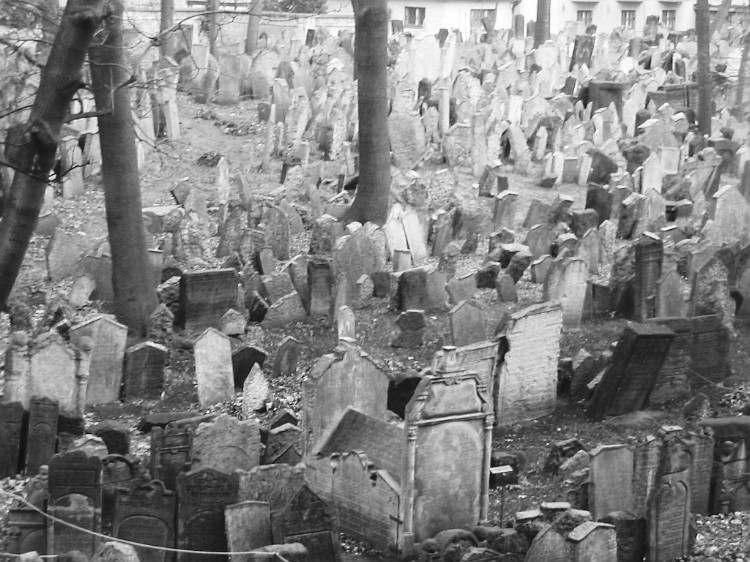Holocaust Education & Archive Research Team |
Ghettos
Prague Introduction to the Ghettos of the Holocaust
Jewish Ghettos The Judenrat Judenrat Leaders Prominent Jews
| |||||
Jewish Life in Prague
The Prague Ghetto, as it has been called since the 16th century, began as a colony of Jewish tradesmen who came to Prague and settled in this area permanently. In the 13th century, by order of the city administration and the church authorities, an independent district was created and named the Jewish Quarter.
Building also continued within this area, and dwelling houses arose around the synagogues, schools and cemeteries. There were also many changes in the Josefov during the Baroque period; new buildings were erected, old buildings reconstructed - mostly after the Great Fire of 1754.
During the siege of Prague (1648), the Jews distinguished themselves again by courage and bravery. They formed a fighting group to defend the city and the ghetto, driving back the Swedish invaders with long spears. In recognition of their deeds, they were given a "Schwedenhut" (Swedish Helmet), permission to have a clock with Hebrew numerals and to build a tower on the Jewish town-hall. But they did not gain any legal rights and their martyrdom did not cease. Frequently, they were banished, and often, when hostile mobs pillaged their homes, they sought refuge in the cemetery, praying at the graves of their rabbis and waiting for God's miracle to deliver them from their misery. In the ancient cemetery, among the 20,000 tombstones, could be found some with the name of Brandeis inscribed upon them-names of rabbis, merchants or artisans who belonged to Jewish guilds.
During the 19th Century, Jews gradually became emancipated. Temporary civil equality was granted to Jews under the law in 1849. The ghetto was abolished in 1852 and Josefov became a district of Prague. In the 1800's, Jews became caught up in the culture wars between the Czech-speaking middle class and the German-speaking members of the Austro-Hungarian empire. From the 1830's to the 1870's, Jews began to adopt the German language and assimilated German cultural patterns. Following the 1870's, however, the growth of Czech nationalism increased the level of antagonism felt by the Jews. By the last quarter of the 19th Century, a network of Jewish institutions dedicated to Czech-Jewish acculturation emerged; however, not all Jews supported them, some remained faithful to German language and culture, while others favored Zionism.
In 1899, Zionism began to become popular in Prague among the young professionals and students. They formed their own Zionist organization, Bar Kochba, which published Selbstwehr, Self-defense, a Zionist biweekly publication in Prague from 1907-1938. Conflict between the Zionists and the Czech Jewish nationalists existed; Jewish nationalists (Zionists) did not want to be involved in the national conflict over the usage of German and Czech language, while the Czech-Jewish pro assimilation groups were involved because they resented the German denigration of Czech culture and also wanted to have a rapprochement between Jews and Slavs in Czech lands.
German was spoken widely among many members of the Prague Jewish community and continued to be taught despite the tensions with the Czech-Jewish nationalists. During the first decades of the 20th Century, German-speaking Jews in Prague produced a large body of internationally acclaimed literature. The most famous of these writers were Franz Kafka, Max Brod and Franz Werfel.
In March 1938, Nazi leader Adolf Hitler's next target for annexation was Czechoslovakia. His pretext would be the ethnic German populations living in Czechoslovakia's northern and western border regions, known collectively as the Sudetenland. Their incorporation into Nazi Germany would leave the rest of Czechoslovakia powerless to resist subsequent occupation.
Sudeten German leader Konrad Henlein offered the Sudeten-German Party (SdP) as the agent for Hitler's campaign. Henlein met with Hitler in Berlin on March 28, 1938, where he was instructed to raise demands unacceptable to the Czechoslovak government led by President Edvard Beneš. On April 24, the SdP issued the Carlsbad Decrees, demanding autonomy for the Sudentenland and the freedom to profess Nazi ideology.
If Henlein's demands were granted, the Sudetenland would then be able to align itself with Nazi Germany. On October 5, Beneš resigned as President of Czechoslovakia, realizing that the fall of Czechoslovakia was fait accompli. Following the outbreak of World War II, he would form a Czechoslovak government in exile in London.
During World War II, Czechoslovakia ceased to exist and was divided into the Protectorate of Bohemia and Moravia of the Third Reich and the newly declared Slovak Republic, with small slices (e.g. the Teschen) going to Poland and Hungary. Prior to the invasion of the Nazis, the Jewish population in Prague amounted to about 56,000.
In March 1939 Konstantin von Neurath was appointed Reichsprotektor of the Reichsprotektorat Böhmen und Mähren. He instituted German laws controlling the press and abolished political parties and trade unions, ordered a harsh crack-down on protesting students in October and November 1939, but he was regarded as insufficiently rigorous in controlling Czech resistance. In September 1941 relieved from day-to-day powers and later replaced by Reinhard Heydrich.
On 21 June 1939 Neurath issued a decree excluding Jews from economic life of the Protectorate and forcing them to register their assets. Jewish companies were to be taken over by German Treuhander who would supervise their sale or “aryanisation”.
The day after the publication of Neurath’s decree, the SS Jewish expert, Adolf Eichmann arrived in Prague, establishing himself in a confiscated Jewish villa in Stresovice.
Eichmann headed “The Central Office for Jewish Emigration” ( Zentralstelle fur Judische Auswanderung), an SS bureaucracy for robbing and expelling Jews which had first been established in Vienna.
Eichmann’s permanent representative in Prague was SS-Hauptsturmfuhrer Hans Gunther. Although a decree by the Reichsprotektor of 21 July 1939 subordinated Gunther to the Security Police Commander of the Protectorate SS- Brigadefuhrer Walter Stahlecker, he was solely answerable to Eichmann.
A central Jewish authority was promoted to facilitate the operations of the Central Emigration Office. In March 1940 the Jewish Communities of the Protectorate were subordinated to the Jewish Religious Council of Prague, headed by Dr Emil Kafka and his deputy Jakub Edelstein, which had been created in the wake of the Nazi occupation
This organisation was now expected to register the Jewish population of Bohemia / Moravia and raise funds for emigration. At a meeting with Dr Kafka in the summer of 1939 Eichmann demanded the expulsion of 70,000 Jews within a year. When Kafka protested there was no money for such a massive undertaking, Eichmann threatened to clear Prague street by street, sending 300 a day to the concentration camp at Dachau where “they would be very keen on emigration.”
In August 1939 Jews were segregated in Prague restaurants and prohibited from using public baths and swimming pools. The outbreak of the Second World War brought an avalanche of new decrees aimed against Jews. A dawn to dusk curfew was imposed on all Jewish households and their radios were confiscated.
At the beginning of 1940 Jews were forbidden to withdraw more than 1,500 crowns a week from their bank accounts, which were not allowed to earn interest. Gold, silver platinum and jewellery were to be sold at a discount to Hadega, a special company dealing in Jewish property established at 32 Hibernergasse.
Jews were excluded from the movie and theatre industries, they were restricted to the back of the second car on Prague trams and excluded from all hotels except the Fiser and the Star.
In April 1940 the Protectorate government issued a comprehensive law banning Jews from public service and all social, cultural and economic organisations, Jewish doctors could still practice but only in Jewish community.
Jews were ordered to report to the local police and have their identity papers stamped with a distinctive J. In August 1940 Jewish children were excluded from Czech schools and in October 1940 Jews were denied access to a wide range of rationed goods and banned from certain areas of Prague, including the Vltava embankment.
In January 1941 their driving licences were confiscated and Jews were forced out of their apartments in the best areas of Prague, and moved into old tenements in the First, Second and Fifth districts of the city. Their flats were taken over by Nazi officials.
Discrimination against the Jewish community culminated with the decree of 1 September 1941 ordering all Jews to wear the Yellow Star of David.
On 27 September 1941 SS- Obergruppenfuhrer Reinhard Heydrich the head of the Nazi security police, was named acting Reichsprotektor, replacing Neurath, and one of his first acts in Prague was to close the remaining synagogues and all other Jewish centres of worship.
On 10 October 1941 Heydrich, Karl Hermann Frank and Eichmann met to plan deportations from the Protectorate to Lodz, Minsk and Riga, and the establishment of the ghetto in Theresienstadt.
Six days later the first train containing 1,000 Jews from Prague for Lodz in Poland, between 16 October and 3 November five transports containing nearly 5,000 men, women and children were despatched to the Lodz ghetto.
Before each deportation to Theresienstadt the families involved were notified by the Jewish council and had to assemble in barbed-wire area with a few decrepit huts established at the Trade Fair Grounds near Stromovka Park.
Heda Kovaly deported in the autumn of 1941 described the chaotic scenes at the assembly scene:
“The inside of the Exposition Hall was like a medieval madhouse. Several people who were seriously ill and had been brought there on stretchers died on the spot. A Mrs Tausig went completely crazy, tore her false teeth out of her mouth, and threw them at our lord and master, Obersturmbannfuhrer Fiedler. There were babies and small children who cried incessantly and just beside my parents, a small fat bald man sat on his suitcase playing his violin as if none of the surrounding bedlam were any concern of his. He played Beethoven’s Concerto in D Major, practicing the same passages over and over again.”
From this assembly point the columns were marched through the streets, escorted by Czech police to the Prague –Bubny station to make the slow three hour journey to Theresienstadt.
The property left in Prague was redistributed to Germans, the process was controlled by the SS, in an irate memorandum to Nazi officials in Prague, Stahlecker’s successor, SS –Standartenfuhrer Horst Bohme, complained that his office was being treated as a housing agency.
The Nazis destroyed synagogues and Jewish graveyards in the Sudetenland, but the synagogues of Prague and the ancient Jewish cemetery in the Old Town however, were spared this fate.
On 17 June 1942 the Protectorate government ordered the transfer of the archives and religious objects of all Jewish congregations to the capital where they were stored in a former Jewish school at 3 Joachymgasse in the Old Town.
The provincial department of the Jewish Congregation of Prague under Dr Karel Stein was made responsible for registering and cataloguing this collection which included 2,500 Torah rolls, 6,000 pieces of ceremonial silver and a huge archive of papers and photographs relating to Jewish life.
Stein suggested that this material should be used as the basis for a Central Jewish Museum, augmenting the holdings of the Jewish Museum of Prague founded in 1906, when urban renewal destroyed the old ghetto.
Gunter’s deputy at the Zentralstelle SS-Obersturmfuhrer Karl Rahm, later to be the commandant at the Theresienstadt ghetto, agreed to this project. For the SS the collection was to form the basis of a museum of the extinct Jewish race in Europe, after the Final Solution had been achieved.
Following the death of Reinhard Heydrich - on 9 June 1942 about 1,000 Jews left Prague in a single train which was numbered “AaH – Attentat aus Heydrich – for Poland. The official destination was Ujazdow in the Lublin district, but in all probability this transport was murdered in the death camp at Belzec.
The murder programme was named Operation Reinhard, in honour of the fallen SS- Obergrupenfuhrer. During the war, Prague was the target of several allied bombings, the deadliest one occurring on February 14, 1945, when large parts of the city centre were destroyed, leaving over 700 people dead and nearly 1200 injured.
The Prague uprising started on May 5, 1945 when Prague's Czech citizens, assisted by a renegade Russian division formerly in service of the Waffen SS, had revolted against the Nazi German occupiers.
That same day, General Patton's American Third Army (with 150,000 soldiers) arrived in Pilsen (only a few hours away from Prague) while Marshal Konev's Soviet Army was on the borders of Moravia. General Patton was in favour of liberating Prague, but he had to comply with the instructions from General D. Eisenhower. General Eisenhower requested the Soviet Chief of Staff to permit them to press forward, but was informed that American help was not needed (a prior agreement from the Yalta Conference was that Bohemia would be liberated by the Red Army). Finally, on May 9, 1945 (the day after Germany officially capitulated) Soviet tanks reached Prague. It was not until May 12, 1945 that all fighting ceased in the Czech Lands. German occupation caused the death of 270,00
Sources:
USHMM Eichmann and the Jews 1987 Michel Slonson Austria - OEsterreichisches Staatsarchiv Yad Vashem Yale Archive Prague – In the Shadow of Swastika by Callum MacDonald and Jan Kaplan – published by Quartet Books 1995 The Holocaust by Martin Gilbert – published by Collins London 1986 The Final Solution by G. Reitlinger- published by Vallentine Mitchell and Co Ltd 1953
Copyright UCH & US H.E.A.R.T 2007
|

